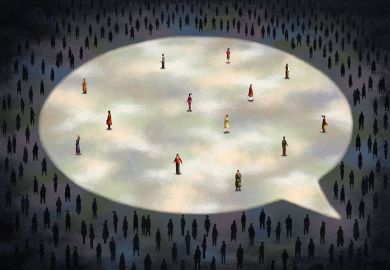Even if you have not read the Harry Potter books, you can hardly be unaware of the ocean of hype surrounding J. K. Rowling's boy wizard. Now comes the tide of interpretation, with varying approaches and degrees of seriousness.
These three books, written between the build-up to the second film in December 2002 and the long-awaited publication of the fifth novel in June 2003 (and no doubt cleverly timed to cash in), tackle the "science" behind the stories (Roger Highfield), the phenomenon of their commercial success (Andrew Blake) and the stories as literature (Suman Gupta).
The Science of Harry Potter , subtitled How Magic Really Works , aims to explain how everything from broomsticks to invisibility cloaks might be created by Muggle technology. Highfield's tone is jocular and his references to Potter-speak inventive. The acknowledgements section assures us that while the book could not have been written without the help of some big scientific cheeses, "any remaining howlers... are, of course, the result of hexes, curses and confounding spells".
Highfield begins by establishing the similarities between magic and science. Both originate in man's struggle to make sense of a complex world and both require leaps of faith from those untrained in science. He points out that much of what seems magical in the Potter books has already been rendered possible by modern technology. In a world of global positioning systems and voice mail, are the "marauder's map" or "howlers" so outlandish? And Highfield is quick to counter claims that he is stripping away the magic, by pointing out that "science can actually make the magical world... even more extraordinary by laying bare (its) complexity".
Beginning with broomsticks, he takes us through the scientific possibilities that might explain their flight - engine-powered aerodynamics, balloon assistance and rocket propulsion - and goes on to describe attempts to counteract gravity with rotating magnets. This segues into speculations about how wormholes and quantum mechanics might explain "floo powder", the portal to railway platform Nine and Three Quarters and Hermione's "time turner". Time travel thus despatched, Highfield examines the mind-altering hallucinogens that might lead wizarding types to believe they are flying. Particularly colourful here is his description of 14th-century witches who got high by mixing plants with fats and oils, which they would then use to "anoint a staff and apply to their vaginal membranes". In the animal kingdom, the colour-changing cells of cuttlefish could explain invisibility cloaks; a real organism that causes rats to forget their fear of cats mirrors the "imperius curse"; and homeotic mutations could be the starting point for "animagus"-like transformations.
It is fascinating to learn that the persecution of witches coincided with the Little Ice Age, and that werewolf-like symptoms can be discerned in diseases such as porphyria and rabies. It is also interesting to see what Rowling has got scientifically wrong (although Highfield is not a nit-picker, he points out that mandrake puts people to sleep rather than reviving them, and pewter cauldrons would disintegrate when exposed to flames). Whether by accident or design, most of Rowling's science is sound.
It would be intriguing to know how much of her imagination is fuelled by research and how much springs from our subconscious store of popular-science notions. One wonders what Highfield would have made of the "thestrals" and "prophecy spheres" of the latest Potter book.
Blake's big idea is that the turn of the century has seen a "retrolution" (that is to say, retro-revolution), a repackaging of the past in the present, and that Rowling's books perfectly encapsulate this concept. Although Harry Potter is a modern boy, the familiar tropes are all there: the orphan hero; the public-school setting; and the adventure story-struggle between good and evil. In essence, the Potter phenomenon captures the retrolutionary Zeitgeist , hence the books' appeal. Blake goes further, pointing out the synchronicity of the election of Labour, itself a repackaging of the old as new, with the publication of the first Potter novel. Tony Blair called for "education, education, education" and, hey presto, Harry Potter books launched literacy hours in schools across the land.
Blake's work is a rousing polemic - not so much against the Potter books but against the "creativity culture" of Labour. According to him, Blair is Thatcher repackaged, wanting to "magic us back to work" so we can all play our part in generating a "knowledge economy". However, the price is high: we are free only "to feel chained by debt to a world whose significant meanings seem to revolve around purchase". And the Harry Potter phenomenon is the apotheosis of this deadening consumerism. Although he does allow that Rowling shows the ugly side of capitalism in Dudley Dursley's bulky form, nonetheless she has sanctioned a vast array of merchandise. The front cover of The Irresistible Rise distances itself from this money-grubbing by proudly announcing its lack of official endorsement (a boast somewhat undermined by the decidedly Potteresque design of its original front cover).
It will be interesting to see if sales figures for the final two Potter books continue ever upwards, as Blake predicts, and if all seven associated films are produced as planned. As Rowling's page count increases, it is hard to see how the screen adaptations can avoid being reductive.
Gupta is the only one of these three authors to critique Rowling's writing in detail. But as his approach is curiously pedantic, one has to read well over half the book before getting to the meat. Having waded through debates about the "implied reader" and the "constructed author", a justification of a "text-to-world" approach, and the author's stance on children's and fantasy literature, one reaches a closely argued piece about the sinister side of the Potter phenomenon.
While Blake touches briefly on issues of race and class, pointing out that the obvious superiority of wizards over Muggles means that Rowling's world is based on a fundamental inequality, Gupta picks up this subject with gusto. Under his beady gaze, Mr Weasley, the Muggle enthusiast, takes on a vaguely patronising aspect, while the supposedly benevolent wizarding authorities (problematised, it must be said, by Rowling in book five, but ultimately resolved in Dumbledore's person) have historically carried out mass exterminations of giants. Even if one argues that the overall message of the books is one of tolerance and that, anyway, children's literature should not shy away from difficult aspects of life, one must object, says Gupta, to the books' "unthinking" acceptance of the notion of superior races.
The argument deepens with his scrutiny of the house elves. Bound in slavery, they show all the characteristics of rational humans except the desire for freedom (Dobby excepted). Ergo, the Potter world is irrational.
Indeed, the very idea that Harry is "chosen" is an affront to rationality.
If Gupta is right, the secret of Harry Potter's success must be that the books offer what we "unthinkingly" desire, or, worse, that there is a growing tendency towards irrational belief. I can foresee more books about Harry on the horizon.
Anna Thomson is on the staff of The THES .
The Irresistible Rise of Harry Potter: Kid-Lit in a Globalised World
Author - Andrew Blake
ISBN - 1 85984 666 1
Publisher - Verso
Price - £12.00
Pages - 118



